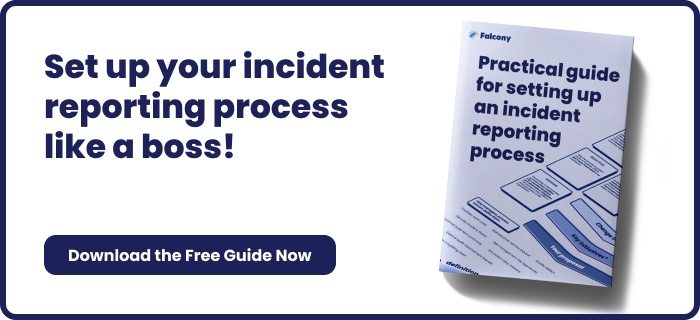7 Common Accidents in Warehousing and Distribution
Warehousing and distribution environments are essential components of the supply chain, but they can also be hazardous places to work if safety procedures are not rigorously followed.
The fast-paced nature of these operations, combined with the use of heavy machinery, high shelving, and manual handling tasks, means that accidents can—and do—occur. Identifying the most common types of incidents is a crucial step toward improving health and safety standards.
Below are seven of the most common accidents seen in warehousing and distribution operations, along with preventative measures that can help mitigate risk.
Slips, Trips and Falls
These are among the most frequent accidents in any workplace and are particularly prevalent in warehouse environments. Wet or oily surfaces, loose packaging, uneven flooring, and poor housekeeping can all contribute.
Preventative Measures:
-
Maintain clean, dry floors.
-
Clearly mark hazards.
-
Ensure proper lighting throughout the warehouse.
-
Use anti-slip mats or coatings in areas prone to spills.
Manual Handling Injuries
Lifting, carrying, pushing, and pulling heavy items can result in musculoskeletal disorders and acute injuries, especially when incorrect techniques are used.
Preventative Measures:
-
Provide manual handling training.
-
Encourage team lifts for heavy or awkward loads.
-
Make use of lifting aids such as trolleys and pallet jacks.
-
Redesign workflows to minimise the need for manual handling.
Forklift Truck Accidents
Forklift trucks are indispensable in warehousing but also pose significant risk when driven recklessly or operated by untrained staff. Collisions, rollovers, and crush injuries are all possible.
Preventative Measures:
-
Ensure only trained and certified operators use forklifts.
-
Establish designated vehicle and pedestrian zones.
-
Carry out regular maintenance and inspections.
-
Limit speeds and enforce safe driving practices.
Falling Objects
Items stored at height may fall due to improper stacking, overloading shelves, or accidental knocks—posing a serious threat to those below.
Preventative Measures:
-
Follow load limits and stacking guidelines.
-
Use safety netting or edge protection on high shelves.
-
Regularly inspect racking systems.
-
Train staff in safe storage procedures.
Repetitive Strain Injuries (RSIs)
Tasks that involve repeated motions, such as scanning, packing, or using hand tools, can lead to long-term strain injuries.
Preventative Measures:
-
Rotate staff between different tasks to reduce repetition.
-
Encourage regular breaks and stretching.
-
Implement ergonomic workstations and tools.
-
Monitor and review work routines for risk factors.
Loading Bay Accidents
Loading bays are high-traffic zones where lorries, forklifts, and workers interact in a fast-moving environment. Falls from dock edges or being struck by reversing vehicles are common risks.
Preventative Measures:
-
Use wheel chocks and dock safety barriers.
-
Ensure clear communication during loading/unloading.
-
Implement visual and audible warnings for moving vehicles.
-
Provide edge protection and fall arrest systems where needed.
Fire and Chemical Hazards
Warehouses often store flammable or hazardous substances, making fire safety a key concern. Spills and improper storage of chemicals can also lead to serious incidents.
Preventative Measures:
-
Store chemicals according to regulatory standards.
-
Maintain accessible and functional fire suppression systems.
-
Train staff in emergency response and spill control.
-
Conduct regular fire drills and safety audits.
Conclusion
Accidents in warehousing and distribution can lead to serious injuries, lost productivity, and legal liabilities. By understanding the common hazards and implementing robust control measures, businesses can foster a safer working environment. Continuous training, regular audits, and a strong safety culture are essential to ensuring that risks are identified and managed proactively.
Organisations that invest in workplace safety not only protect their people but also enhance operational efficiency and compliance. Ultimately, a safer warehouse is a more productive and resilient one.
If you're looking to implement a mobile tool for your audits, we've got you covered. Falcony | Audit is easy-to-use, fast to set up, has customisable workflows, vast integration possibilities and more. Contact us for more information.
We are building the world's first operational involvement platform. Our mission is to make the process of finding, sharing, fixing and learning from issues and observations as easy as thinking about them and as rewarding as being remembered for them.
By doing this, we are making work more meaningful for all parties involved.
More information at falcony.io.

Related posts
15 Most Common Safety Incidents in Warehousing and Distribution
The warehousing and distribution industry plays a vital role in the global supply chain, ensuring...
9 Critical Loss Prevention Risks in Warehousing and Distribution
In the fast-paced world of warehousing and distribution, businesses must continually address...
20 Types of Safety Hazards in the Warehousing and Distribution Industry
Safety hazards are a significant concern in the warehousing and distribution industry, where...






